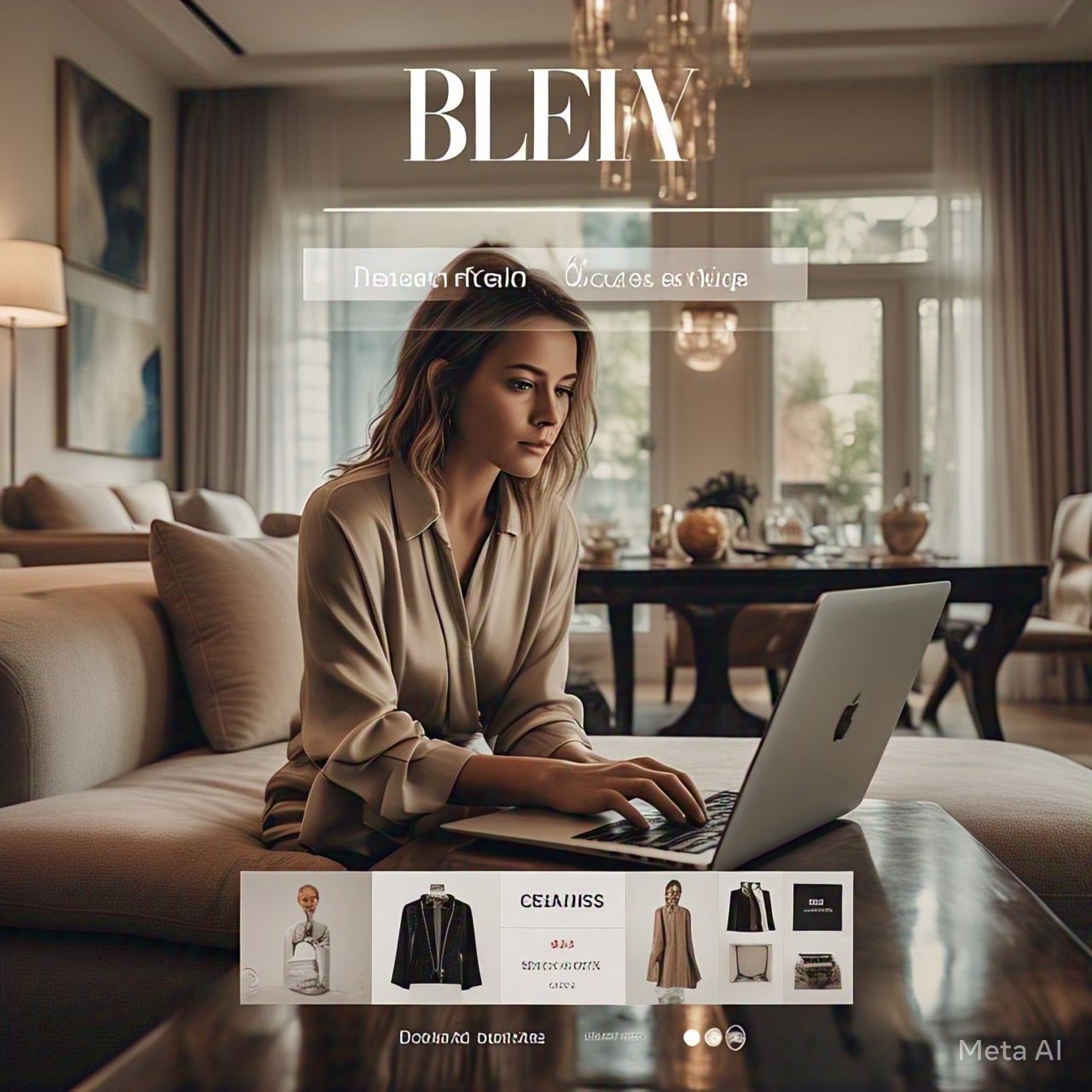The rise of e-commerce has transformed nearly every industry, and luxury retail is no exception. While luxury shopping has traditionally been associated with in-store experiences and personal service, premium brands are increasingly embracing online platforms to reach a wider audience. This shift represents a significant change in how luxury items are marketed, sold, and experienced by consumers. The challenge, however, lies in maintaining the exclusivity, high-quality service, and brand image that luxury buyers expect, while adapting to the digital landscape.
Luxury shopping online is a rapidly evolving sector, and premium brands are continuously adapting to meet the changing needs and expectations of digital-savvy consumers. By leveraging technology, maintaining their brand’s exclusivity, and ensuring a seamless customer experience, luxury brands are succeeding in their shift to e-commerce.
Whether it’s through offering personalized shopping experiences, creating immersive virtual environments, or embracing sustainability and ethical practices, the luxury market is increasingly blending high-end retail with the digital world. As this trend continues to evolve, consumers can expect even more innovative and convenient ways to shop for their favorite luxury products online, while brands continue to set the bar for digital sophistication and service.
The E-Commerce Shift in the Luxury Retail Sector
The Traditional Luxury Shopping Experience
Luxury shopping has long been synonymous with a curated, personalized experience. For many premium brands, the physical store is more than just a place to buy products—it’s a space where consumers can experience the brand’s values, heritage, and identity in a tactile way. Service plays a key role in this experience, with highly trained sales staff offering expert advice, personalized fittings, and exclusive access to limited-edition collections.
Until recently, e-commerce seemed like a challenge for luxury brands. The concept of buying a high-end handbag or bespoke suit online, without being able to touch or try it, felt counterintuitive to the idea of luxury shopping. However, the global pandemic and shifting consumer habits have prompted luxury brands to reimagine their approach to digital retail.
Embracing Digital Transformation
With physical stores temporarily closed and social distancing measures in place, luxury brands had no choice but to adapt. As more consumers turned to online shopping, brands began to realize the potential of e-commerce in broadening their reach. While some luxury retailers initially hesitated to enter the digital space, many have now fully embraced the e-commerce model, integrating it seamlessly with their traditional operations.
Key Strategies for Luxury Brands in E-Commerce
1. Building an Exclusive Online Experience
For luxury brands, creating an online experience that mirrors the exclusivity of their physical stores is essential. E-commerce websites for premium brands are not just online storefronts—they are meticulously designed to reflect the brand’s heritage, craftsmanship, and identity. High-quality imagery, minimalistic design, and a seamless user interface are critical elements that ensure the digital experience aligns with the brand’s luxury positioning.
Many luxury brands also offer VIP services for their online customers, providing personalized shopping experiences through digital stylists, exclusive product previews, and early access to new collections. This strategy helps replicate the in-store exclusivity and high-end service that luxury shoppers expect.
2. Leveraging Social Media and Influencers
Social media platforms, particularly Instagram, have become invaluable tools for luxury brands looking to build brand awareness and engage with a global audience. High-end fashion brands such as Gucci, Chanel, and Louis Vuitton have leveraged platforms like Instagram to showcase their collections, tell their brand stories, and connect with consumers directly.
Influencers play a significant role in promoting luxury products to a wider audience. Through collaborations and paid partnerships, luxury brands tap into the influencer’s large following, using their platforms to showcase products in a more relatable and aspirational context. This helps to create a sense of community and inclusivity around the brand while maintaining its exclusive image.
3. Enhancing the Digital Shopping Journey with Technology
To further elevate the online shopping experience, many luxury brands have adopted cutting-edge technologies such as virtual try-ons, augmented reality (AR), and AI-powered styling assistants. These innovations allow customers to virtually try on products, visualize how items will look in real life, and receive tailored recommendations based on their preferences.
For example, luxury eyewear brands such as Warby Parker and Ray-Ban have integrated virtual try-on features into their websites and apps, allowing consumers to “try” on glasses via their smartphones. Similarly, brands in the fashion and beauty sectors are using AR to allow customers to see how products look on their skin or body type before making a purchase.
Additionally, AI tools have been used to enhance personalization, offering consumers customized recommendations based on their browsing history and previous purchases. This technology aims to replicate the personalized service typically found in brick-and-mortar stores, making luxury shopping online more intuitive and engaging.
The Role of Digital Flagship Stores
Creating an Immersive Online Brand Presence
Luxury brands are now using e-commerce to develop digital flagship stores, providing an immersive online experience that allows consumers to explore their products in depth. These digital stores go beyond just selling products—they offer experiences that transport the consumer into the world of the brand. Through high-definition images, interactive videos, and detailed product descriptions, online flagship stores bring the essence of the luxury brand to life in a way that is accessible to customers around the world.
In addition to showcasing products, digital flagship stores often feature exclusive content such as behind-the-scenes videos, interviews with designers, and features on the craftsmanship behind the products. This helps to create an emotional connection between the consumer and the brand, making the shopping experience feel more personal, even though it’s taking place online.
Online-Only Collections and Limited Editions
Some luxury brands are taking e-commerce a step further by offering online-exclusive collections or limited-edition items that are only available through their digital channels. This creates a sense of exclusivity and scarcity, which is central to the luxury market, while also giving online shoppers access to special products they wouldn’t be able to find in stores.
For instance, brands like Burberry and Prada have experimented with “see-now-buy-now” collections, where consumers can purchase items straight from the runway immediately after a fashion show. These strategies provide consumers with a sense of urgency and excitement, making the online shopping experience feel more dynamic and exclusive.
The Impact of Global E-Commerce
Expanding Global Reach
One of the most significant benefits of e-commerce for luxury brands is the ability to expand their global reach. With physical stores concentrated in specific cities and regions, luxury brands have traditionally catered to a limited audience. However, the online market opens up a world of possibilities, allowing brands to sell their products to customers in different countries and continents.
This global reach is particularly beneficial in emerging markets, where rising incomes and a growing middle class have led to increased demand for luxury goods. Countries such as China, India, and Brazil are becoming important markets for luxury brands, and e-commerce allows these brands to tap into these new customer bases without the need to invest in expensive brick-and-mortar stores.
Dealing with Logistics and Customs Challenges
While global e-commerce presents numerous opportunities, it also brings challenges in terms of logistics, shipping, and customs. Luxury brands must ensure that their supply chains are efficient and that products reach consumers in a timely and secure manner. Additionally, dealing with customs duties and taxes can complicate the purchasing process, especially for international customers.

To address these challenges, many luxury brands have partnered with logistics companies that specialize in handling international shipments and customs. This ensures that customers receive their orders without delays or complications, maintaining the luxury experience from purchase to delivery.
The transformation of luxury shopping in the digital age is a profound one, and while many luxury brands have embraced the digital shift, their methods of doing so vary widely. The overarching trend, however, points toward the blending of high-tech innovation with the traditional high-touch experience that luxury shoppers expect. As this trend continues to evolve, brands will further refine their approaches to make online luxury shopping as seamless, personalized, and exclusive as possible.
Overcoming Digital Challenges for Luxury Brands
Managing Brand Perception in the Digital Space
One of the primary concerns for luxury brands venturing into e-commerce is the potential risk to their carefully curated brand image. The exclusivity and prestige associated with luxury brands often stem from their limited accessibility and their emphasis on high-quality, personalized experiences. Moving these brands online can create tension between the desire for wider accessibility and the need to preserve an aura of exclusivity.
To counter this, many luxury brands have opted to create a balance between digital access and the perception of rarity. By offering limited-edition products or exclusive pre-order options for online shoppers, these brands manage to preserve the exclusivity that their high-net-worth clientele craves. Additionally, the online experience is often designed to be minimalist yet high-touch, with many sites using understated elegance, beautiful photography, and curated content to reinforce the luxury narrative.
Customer Trust and Security
As more luxury brands move online, ensuring customer security becomes paramount. Shoppers investing in high-end products are likely to be especially cautious about sharing sensitive personal and financial details over the internet. Luxury brands are, therefore, investing heavily in robust cybersecurity protocols to protect their customers’ information.
To ensure customer trust, luxury brands are also offering buyer protection policies such as secure payment options, easy return processes, and transparent privacy practices. Brands also employ advanced encryption technologies to safeguard transactions and personal data. This instills confidence among consumers, reassuring them that their personal and financial information is safe when shopping online.
Partnerships with Third-Party Platforms
Collaborating with Luxury E-Commerce Platforms
While many luxury brands maintain their own e-commerce websites, some also choose to partner with third-party luxury platforms like Net-a-Porter, Farfetch, and MatchesFashion. These platforms already have established audiences of affluent customers and offer brands a way to reach a broader online market while maintaining the luxury experience.
These partnerships provide consumers with access to a curated selection of premium brands, which are often organized by categories such as “exclusive collections,” “limited editions,” or “designer collaborations.” While brands may still control the experience of their own websites, collaborating with these established luxury e-commerce sites helps them tap into the vast global networks these platforms have built over time.
The Role of Third-Party Luxury Resale Platforms
Another emerging aspect of luxury shopping online is the rise of luxury resale platforms. Websites like The RealReal and Vestiaire Collective provide consumers with access to second-hand luxury goods, including designer handbags, watches, and clothing. These platforms offer authentication services to ensure that items are genuine, and they have grown in popularity as sustainability and conscious consumerism become more important to shoppers.
While previously luxury brands may have been hesitant to embrace the resale market due to concerns about controlling their products’ value and image, many are now acknowledging the growing demand for pre-owned luxury items. By aligning with reputable resale platforms, luxury brands can cater to a wider range of customers, particularly those seeking high-end items at a lower price point or those interested in more sustainable fashion choices.
The Future of Luxury Online Shopping
Virtual Reality (VR) and Immersive Shopping Experiences
Looking ahead, the future of luxury e-commerce will likely see the increased integration of virtual reality (VR) and other immersive technologies. Virtual reality could allow shoppers to experience luxury items in more immersive ways, such as attending virtual fashion shows, walking through digital showrooms, or trying on items virtually in 3D.
Some luxury brands are already experimenting with VR and immersive experiences. For example, fashion houses have begun hosting virtual runway shows, enabling consumers from all over the world to attend these events from the comfort of their homes. This concept opens up exciting new possibilities for global audiences to engage with exclusive content and feel like they are part of an elite community.
Sustainability and Ethical Shopping
As e-commerce continues to evolve, so too does the demand for sustainable and ethically produced luxury goods. More and more consumers, particularly millennials and Gen Z, are concerned about the environmental impact and ethical practices of the brands they support. Luxury brands are responding by incorporating sustainability into their product lines, using eco-friendly materials, and supporting fair labor practices.
To meet this demand, many luxury brands have begun integrating sustainability into their digital marketing strategies, with transparent product descriptions and environmental impact statements. Additionally, consumers can now find information about the sustainability efforts of luxury brands online, making it easier to make informed purchasing decisions.
Artificial Intelligence and Predictive Shopping
Another area where luxury brands are likely to invest heavily is artificial intelligence (AI). AI allows for more accurate predictions of consumer behavior, enabling luxury brands to offer highly personalized shopping experiences. By analyzing data from a shopper’s previous purchases, browsing habits, and interactions with the brand, AI can help brands predict what products a customer may be interested in next, making shopping more efficient and enjoyable.
AI-powered chatbots can also be used to provide real-time customer service, answering queries about product details, availability, or delivery times. These virtual assistants offer a personal touch and are often programmed to reflect the tone and style of the luxury brand, making them an extension of the customer service experience traditionally offered in-store.
The Integration of Blockchain for Transparency
Blockchain technology, which allows for secure and transparent transactions, is likely to play a significant role in the future of luxury shopping online. Blockchain offers a way to verify the authenticity and provenance of luxury items, helping combat the issue of counterfeiting. By using blockchain to track the origins of their products, luxury brands can provide customers with verifiable proof of an item’s authenticity, further enhancing consumer confidence in the digital shopping environment.
Conclusion
As luxury brands continue to adapt to the digital world, it’s clear that e-commerce is no longer just a passing trend. By embracing new technologies, providing exclusive online experiences, and leveraging social media to engage with consumers, premium brands are successfully navigating the shift to online retail. However, maintaining the essence of luxury—personalized service, exclusivity, and high-quality craftsmanship—remains at the core of their digital strategy.
The future of luxury shopping online will likely see even more innovations as brands strive to balance accessibility with exclusivity. For now, luxury brands are proving that high-end shopping can successfully translate to the digital realm, offering consumers a seamless, engaging, and luxurious experience from the comfort of their own homes.









